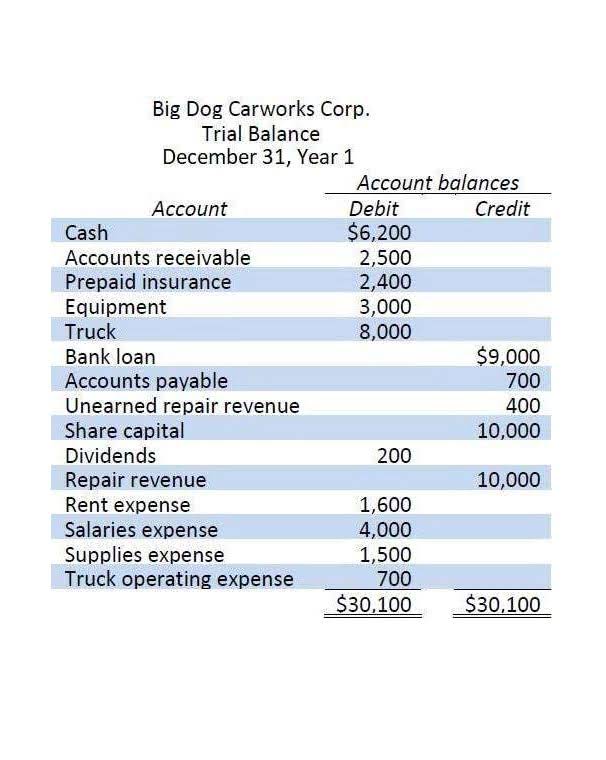
It occurs when a transaction is recorded in wrong account but to the correct type of account. B would have no effect on the TB since neither the debit nor the credit side of the transaction correction of errors in accounting has been accounted for. Your correction journals may also affect the Statement of comprehensive income. The only correction journals which would affect this would be revaluation journals.
Accounting for Free Rent in Lease Agreements
If, however, the books had already been closed for 2022, then these expense amounts would simply be added to the retained earnings adjustment. The adjustment to retained earnings represents the net effect on income of the correction in 2020 and 2021, that is, . Keeping track of invoices to customers and from vendors and ensuring they’re entered immediately and properly into the accounting software can help reduce clerical errors. Monthly bank reconciliation can help to catch errors before the reporting period at the end of the quarter or fiscal year. A bank reconciliation is a comparison of a company’s internal financial records and transactions to the bank’s statement records for the company. The standard requires compliance with any specific IFRS applying to a transaction, event or condition, and provides guidance on developing accounting policies for other items that result in relevant and reliable information.
European Union formally adopts amendments to IAS 1 and IAS 8
This requires continuous monitoring and adaptation to stay compliant with evolving regulations. In this case, the present value is $318, the future value is $615, the number of compounding periods is 12 (monthly compounding), and the number of years is 12. A person may be seen as vulnerable because he or she belongs to some ethnic group, is poor, or is a resident of a particular neighbourhood.
- The error would show on the accounts receivable subsidiary ledger, which contains all of the customers’ invoices and transactions.
- Error of duplication is when an accounting entry is duplicated, meaning it’s debited or credited twice for the same entry.
- In this case, the present value is $318, the future value is $615, the number of compounding periods is 12 (monthly compounding), and the number of years is 12.
- Your correction journals may also affect the Statement of comprehensive income.
Accounting Changes and Error Correction: What it is, How it Works
A correcting entry is a journal entry used to correct a previous mistake. Unintentional accounting errors are common if the journal keeper is not careful or the accounting software is outdated. The discovery of such errors usually occurs when companies conduct their month-end book closings.

Error of Principle

This can include the misclassification of an expense, not depreciating an asset, miscounting inventory, a mistake in the application of accounting principles, or oversight. Errors are retrospective and must include a restatement of financials. The errors which do not involve a suspense account will, when discovered, be corrected by means of a journal entry between the ledger accounts affected. The errors which do involve a suspense account will also require journal entries to correct them, but one side of the journal entry will be to the suspense account opened for the difference in the accounting records.
Accounting Changes and Error Corrections
- This includes reviewing the adjusting journal entries and ensuring that the restated financial statements provide a true and fair view of the company’s financial position.
- A person may be seen as vulnerable because he or she belongs to some ethnic group, or is poor, or is a resident of a particular neighborhood.e.
- Sometimes, a change in estimate is affected by a change in accounting principle (e.g., a change in the depreciation method for equipment).
- A person is vulnerable when he or she is susceptible to some physical, psychological, or financial harm other than the financial harm from an unsatisfactory market exchange.
- E.g. The purchase of a non-current asset costing $100 has been recorded by debiting $10 to the non-current assets account and crediting $100 to cash.
- Companies can generally choose between two accounting principles, such as the last in, first out (LIFO) inventory valuation method versus the first in, first out (FIFO) method.
Reconciliation of accounts is a common practice that can reveal differences needing investigation. Additionally, feedback from auditors, discrepancies noted during inventory counts, and alerts from internal control systems can also point to the presence of errors. For financial statements of periods in which there has been a change in reporting entity, an entity should disclose the nature of and reasons for the change. Accounting errors are mistakes that are made in previous financial statements.

- When a manager overestimates guest counts, they anticipate a higher demand for services or products.
- Balancing competing priorities and addressing diverse stakeholder needs can be complex, requiring effective communication and stakeholder management.
- It represents the division’s ability to cover its direct fixed costs and contribute towards the company’s desired return.
- For example, cost of goods sold, which contains raw materials and inventory, is credited instead of debited and finished inventory is debited instead of credited.
- When two digits are reversed (or “transposed”), an error is created in the books.
An entity is required to disclose the nature of and reason for the change in accounting principle, including a discussion of why the new principle is preferable. Additional disclosures are required for any indirect effects of the change in accounting principle. Financial statements of subsequent periods are not required to repeat these disclosures.
